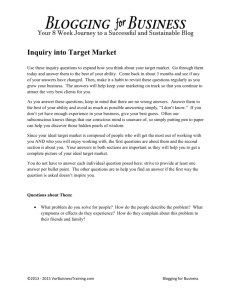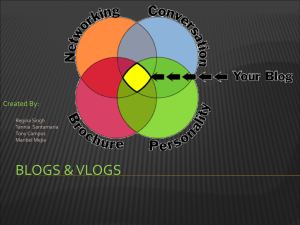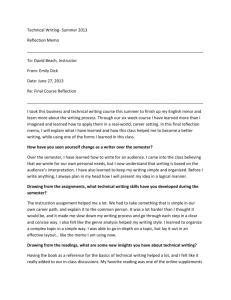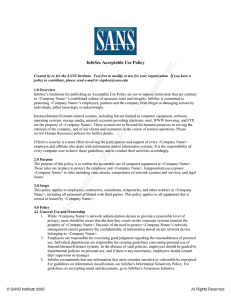Question Pool
advertisement
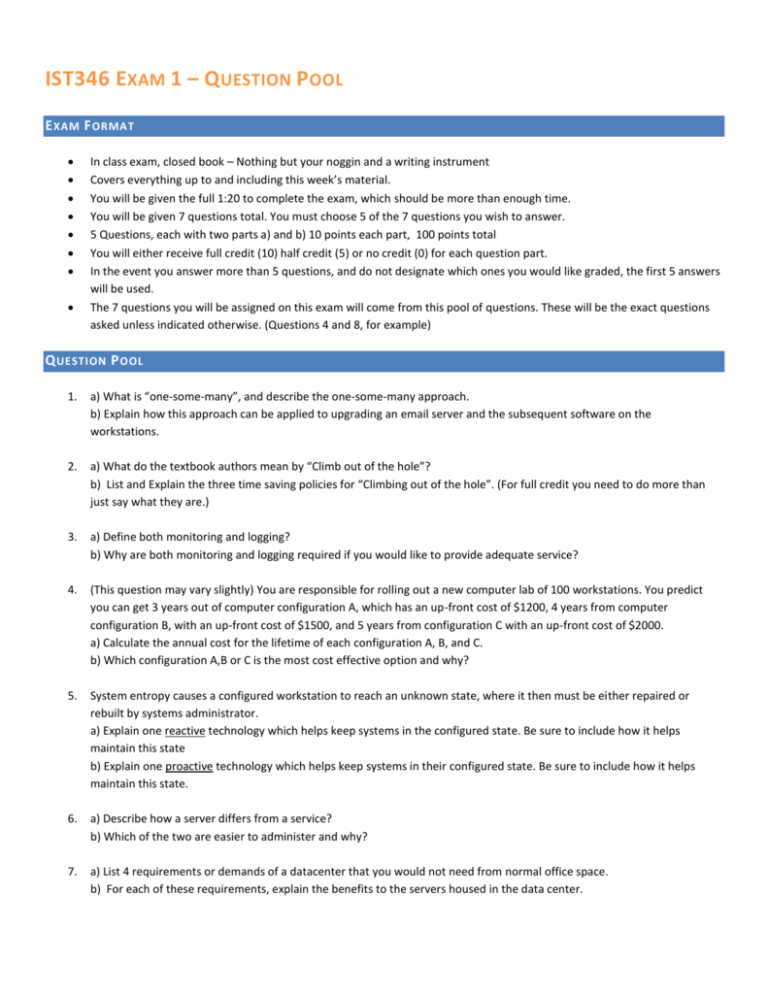
IST346 EXAM 1 – QUESTION POOL E XAM F ORMAT In class exam, closed book – Nothing but your noggin and a writing instrument Covers everything up to and including this week’s material. You will be given the full 1:20 to complete the exam, which should be more than enough time. You will be given 7 questions total. You must choose 5 of the 7 questions you wish to answer. 5 Questions, each with two parts a) and b) 10 points each part, 100 points total You will either receive full credit (10) half credit (5) or no credit (0) for each question part. In the event you answer more than 5 questions, and do not designate which ones you would like graded, the first 5 answers will be used. The 7 questions you will be assigned on this exam will come from this pool of questions. These will be the exact questions asked unless indicated otherwise. (Questions 4 and 8, for example) Q UESTION P OOL 1. a) What is “one-some-many”, and describe the one-some-many approach. b) Explain how this approach can be applied to upgrading an email server and the subsequent software on the workstations. 2. a) What do the textbook authors mean by “Climb out of the hole”? b) List and Explain the three time saving policies for “Climbing out of the hole”. (For full credit you need to do more than just say what they are.) 3. a) Define both monitoring and logging? b) Why are both monitoring and logging required if you would like to provide adequate service? 4. (This question may vary slightly) You are responsible for rolling out a new computer lab of 100 workstations. You predict you can get 3 years out of computer configuration A, which has an up-front cost of $1200, 4 years from computer configuration B, with an up-front cost of $1500, and 5 years from configuration C with an up-front cost of $2000. a) Calculate the annual cost for the lifetime of each configuration A, B, and C. b) Which configuration A,B or C is the most cost effective option and why? 5. System entropy causes a configured workstation to reach an unknown state, where it then must be either repaired or rebuilt by systems administrator. a) Explain one reactive technology which helps keep systems in the configured state. Be sure to include how it helps maintain this state b) Explain one proactive technology which helps keep systems in their configured state. Be sure to include how it helps maintain this state. 6. a) Describe how a server differs from a service? b) Which of the two are easier to administer and why? 7. a) List 4 requirements or demands of a datacenter that you would not need from normal office space. b) For each of these requirements, explain the benefits to the servers housed in the data center. 8. (This question may vary slightly) You just recently purchased a storage array containing 16 1TB drives. The mean-time between failures for the drives is 160,000 hours. You reserve one drive for a hot space, and configure the remaining drives in a RAID 6 configuration. a) What is the Mean-time between failures of the storage array? (You may leave the answer in hours) b) What is the total capacity of storage, in TB, available to the array as configured? 9. We’ve used virtualization heavily in this course. You’ve experienced it first hand in the labs, and your instructor has demonstrated it on several occasions. a) Describe 2 benefits of server virtualization. b) Describe one drawback of server virtualization. 10. Your IT department has decided to support a new service for your company employees – Blogging. Blogging is seen as a key technology component for your company’s future success. a) List and explain the 3 components of a service, cite specifics from the blogging example. b) We learned in this course you should offer 3 separate environments for any service. What are these three environments and what is their purpose (in context with the blogging example)? 11. Scalability represents the service’s ability to grow with its demand. a) List and define the two ways in which a service may be scaled? b) Of the two ways you described which is more difficult method of scaling and why? 12. If you are employed in IT Management, sooner or later you will have to diagnose and correct a technical problem. a) Describe the three elements to understanding any technical problem? b) Explain one of the approaches you can take to discover the root cause of a problem. 13. a) Explain what your Textbook authors mean by “fixing things once” b) Describe the benefits of this approach and explain at least one challenge associated with it. 14. We learned in class about three Cloud computing service offerings. 1) Infrastructure as a Service (Iaas), 2) Platform as a Service (Paas), and 3) Software as a Service (Saas). a) Explain each of these service offerings, making certain to clarify how each differs from the other. b) If your company decides then need to support Blogging as a new service, what would be the deciding factors for choosing Iaas, Paas, or Saas?
